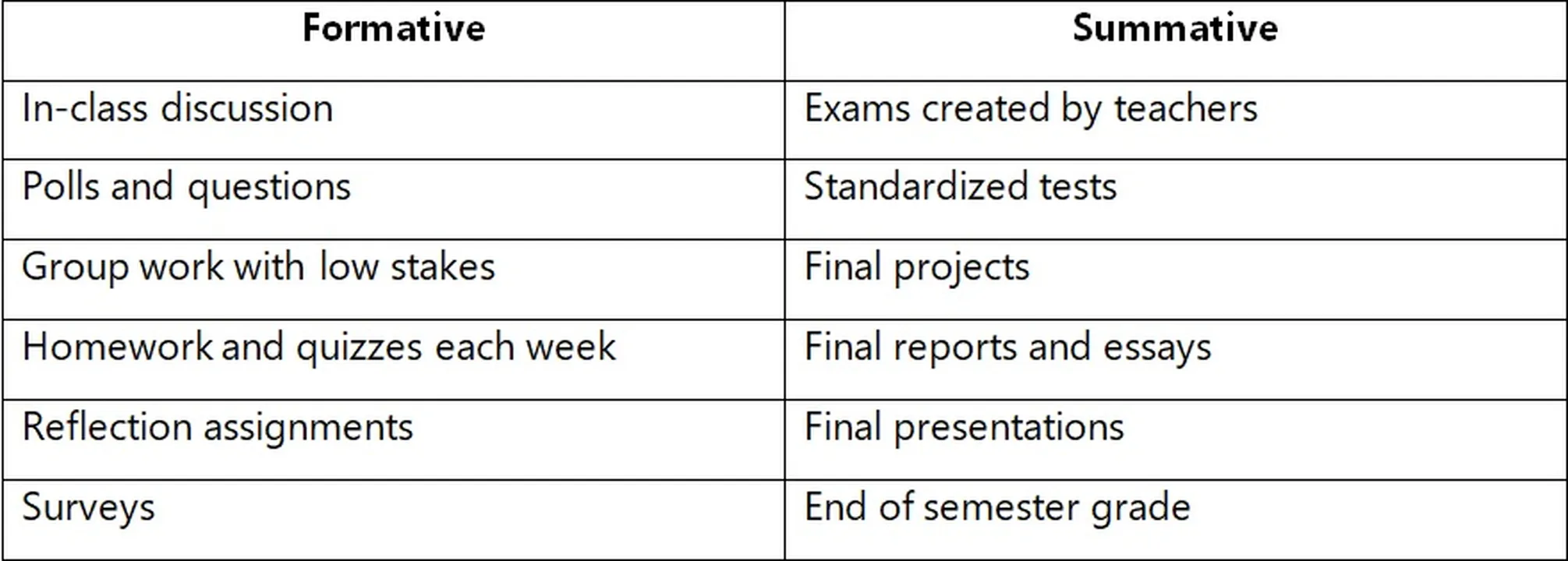Designing the proper assessment can be risky because teachers use it to determine what happens next.
Formative assessment—gathering information about student learning while instruction is still in progress—is a critical but complex task. It allows educators to identify what students understand and where they need support, helping to shape future instruction.
However, relying on a single data point—such as a quiz, presentation, or assignment—is rarely sufficient. Effective formative assessment requires multiple inputs to create a clear picture of learning in progress.
Because learning is multifaceted, no single method of assessment can capture its full scope. That’s why it’s important to use a range of formative assessment tools that are quick, low-stakes, and easy to implement—without overwhelming teachers or students.
Formative assessments are designed to check progress, not assign grades. Their primary purpose is to inform instruction by identifying what individual students or the class as a whole understand at any point in time.

The following strategies provide educators with actionable ways to measure student understanding and adapt instruction accordingly.
Use the first and last few minutes of class to gauge learning.
Prompts to consider:

Games like Kahoot and Quizlet make quick assessments interactive and engaging. Benefits include:
“Dipsticks” are brief check-ins, similar to checking oil in a car. Ideas include:
Observational notes on a roster or tablet can help track individual responses.

Brief student interviews offer deep insights. Try:
For quieter students, consider tools like Seesaw or Flipgrid for recorded responses.
Creative methods such as videography, drawing, or acting can reinforce and assess understanding. Students may:
Identifying and addressing misunderstandings is essential.
Encourage students to evaluate their own learning.
Students can also create screen-casts to explain their thinking, providing teachers with evidence of understanding—or lack thereof.

Non-verbal cues often reveal student comprehension. Prompt students to use silent gestures to indicate understanding. For example:
Ask students to make predictions about upcoming experiments or content.
Small-group stations allow for targeted observation.
Tools like Slack or Today’s Meet offer a platform for idea sharing during lessons.
According to the UK Assessment Reform Group, five principles guide effective assessment:
Formative assessments help identify learning gaps, guide instruction, and foster growth. They are used during learning, not at the end.
Summative assessments measure proficiency after instruction concludes. Examples include final exams, standardized tests, or term projects.
Both are essential to a balanced assessment strategy.

Formative assessment allows for real-time instructional adjustments. Its benefits include:
Unlike static evaluations, formative assessment supports continuous improvement and values persistence, effort, and growth.

Instructors can integrate formative assessments throughout the course to determine when students are ready for summative evaluations. This helps ensure that assessments reflect true readiness.
Research consistently shows that formative assessment leads to significant gains in achievement across disciplines. Its benefits include:
When implemented thoughtfully, formative assessment transforms instruction into a responsive, student-centered experience.
